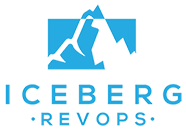This is a question we receive often: “How should we distribute sales pipeline in a way that is fair to Account Executives?”
This is a great question — one that sales leaders should think about. However, answering this question requires thinking one level deeper than fair pipeline distribution. First we have to define “fair”.
The short answer is that the definition of “fair” distribution depends on the source of the pipeline. Not all opportunities are created equal. There are two types of pipeline (ignoring obvious potential for nuance):
1) Inbound pipeline. This is usually (though not always) created by the marketing team. The important distinction here is that the AEs don’t control the creation or volume of this pipeline.
2) Outbound pipeline. This includes all opportunities directly created or influenced by AEs. This includes pipeline created by junior sales reps that the AE manages or mentors. This type of prospecting is often supported by marketing, but if the AEs or their designated SDRs are responsible for participating in the top of funnel, it should be considered outbound.
You should think about these two types of pipeline differently. The definition of “fair” distribution will be different for these two. I have a simple system for setting up fair distribution of pipeline.
For inbound pipeline, I distribute at the point when the lead or opportunity reaches the sales team — a simple round robin. Depending on the size of your team and the volume of leads, you may have a single round robin for the whole sales team or multiple similar round robins set up across regions, verticals, Etc.
An important side note on inbound pipeline is that it’s ok to have multiple round robins running for the same group. Not all inbound opportunities are created equal. For example, if your team works Mid-Market (avg $20k) and Enterprise (avg $100k) opportunities, you should consider having two different round robins.
When it comes to outbound pipeline, the distribution should happen in advance of any prospecting effort. The best way to do this is to assign companies to reps. This is most often done via geographic territories, but can be done by vertical, industry, Etc. The ultimate goal here is to give each AE roughly the same potential pipeline.
An important note about “fair” distribution: it takes volume for round robins to distribute evenly. Account Executives will watch the output of your round robin(s) like a hawk and cry foul every time it feels like someone else is getting a leg up. It takes time for the law of large numbers to take effect and for pipeline to be spread evenly, so you build the right system for your team and then stick to your guns.
Pro Tip: When you roll out an inbound opportunity round robin, include a clear policy for no-shows and unqualified meetings. Not all meetings are created equal, so be ready to address situations where prospects are a bad fit for your product, or for when they simply don’t show up.
My personal opinion is that you should let the round robin do its job. Over time, the no-shows and unqualified meetings will spread evenly across the team. If you add Account Executives to the top of the round robin every time they get a no-show or an unqualified meeting, you’re creating an incentive for them to tighten their qualification standards.
If you need help creating process or implementing systems to handle pipeline distribution, fill out the contact form on our home page.


